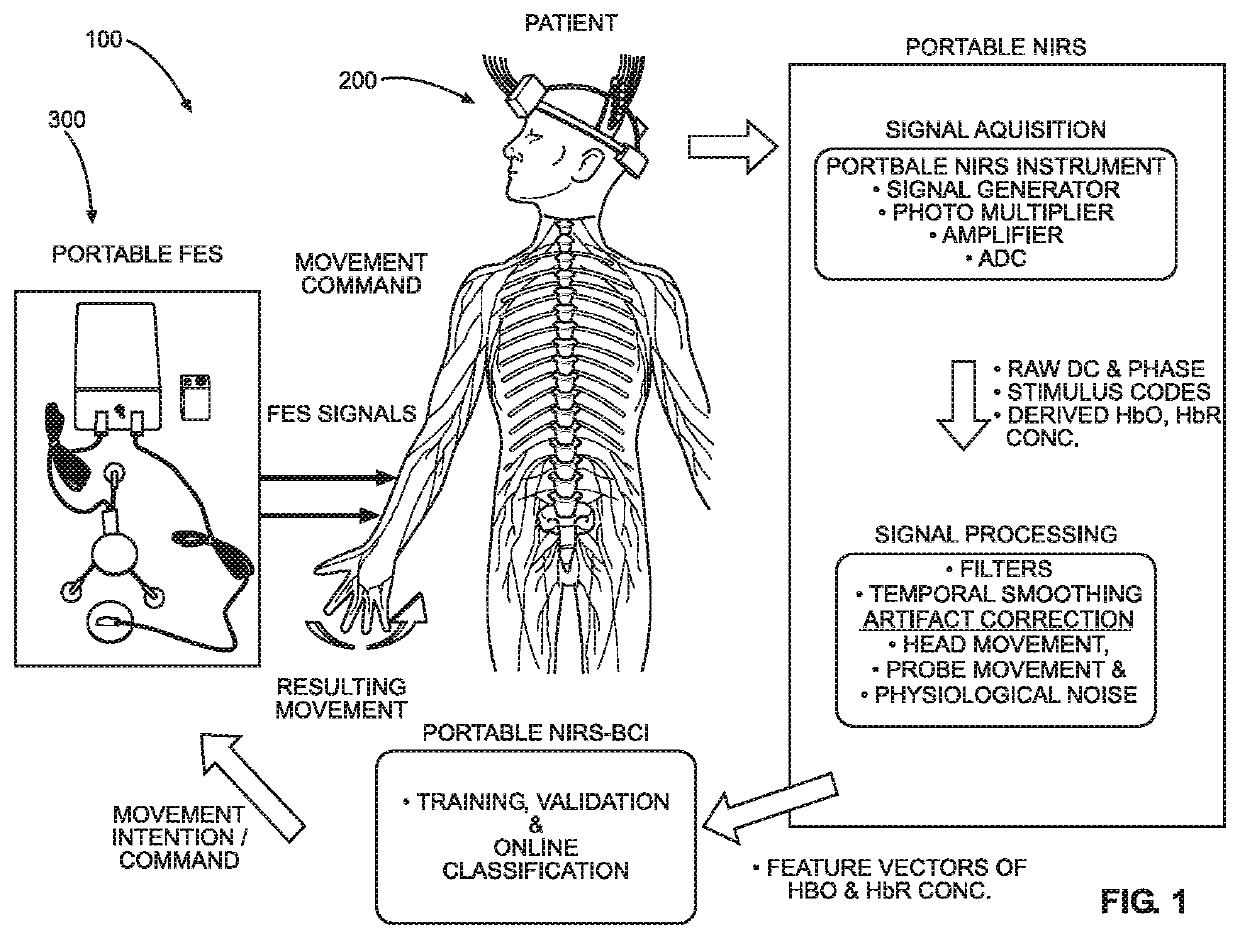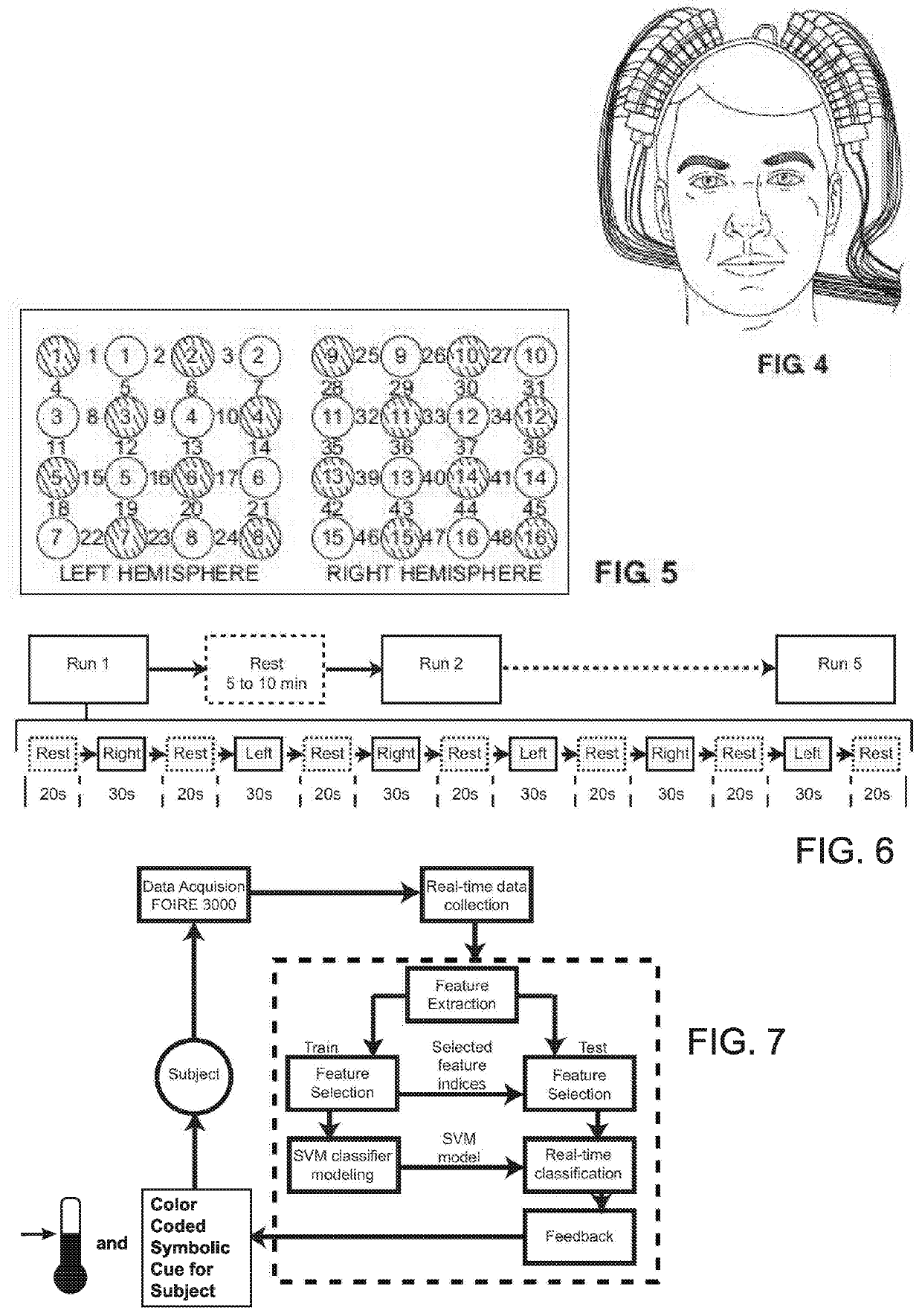Multimodal closed-loop brain-computer interface and peripheral stimulation for neuro-rehabilitation
a closed-loop braincomputer and neuro-rehabilitation technology, applied in the field of system and method of promoting movement of the human body, can solve the problem of no established method to restore the function of the upper limb to normal, and achieve the effect of improving body movemen
- Summary
- Abstract
- Description
- Claims
- Application Information
AI Technical Summary
Benefits of technology
Problems solved by technology
Method used
Image
Examples
experiment 1
[0093]
[0094]An objective of this study was to implement real-time subject-dependent classification of bilateral hand movement using a movement execution trained BCI. The system was validated on bilateral motor execution and imagination data, to provide realtime classification results and spatial activation patterns for further analysis. In the experiment, the classifiers were adapted as per Eq (9) for the following test runs. Run 3 tested the classifier on ME for each subject. Runs 4 and 5 were used to test classification of MI based on ME models, and the subjects were asked to imagine the movements. In all the test runs, the subjects were provided a visual feedback based on the classification output.
experiment 2
[0095]
[0096]An objective of this study was to perform a corollary to Experiment 1, i.e., to implement real-time subject-dependent classification and feedback of left versus right hand motor imagery, based on a classifier built using covert hand movement data. In the MI runs, 1 to 4, the subjects were instructed to imagine the movement they had practiced. The first run was used for training the classifier. For Runs 2 to 4, the classifier was updated after each Run, as per Eq (9). The performance of subjects performing MI was tested using the classifier and a neurofeedback was provided. Run 5 was used to test classification of ME based on MI models (with the classifier modeled based on the last two MI runs) and the subjects were asked to perform ME.
experiment 3
[0097]
[0098]An objective was to demonstrate the feasibility of a Subject-Independent Classifier (SIC) built from the ensemble data of all participants from Experiment 1, performing hand movement execution. At the beginning of this experiment, a practice session was provided where the subjects were asked to perform hand clenching actions. During the experiment, in test runs 2, 3 and 4, the subjects were asked to perform MI of the practiced movements without moving their hands. In the ME run 5, the subjects were asked to execute the movement. Real-time classifications of overt and covert movements from new subjects were performed using the SIC and neurofeedback was provided in all the runs.
[0099]Feature Extraction and Selection
[0100]In a study, the inventors used multi-channel temporal information of changes in concentration levels of blood oxy hemoglobin (HbO) to classify volitional overt and covert hand movements. The discriminative features from fNIRS recordings are extracted from ...
PUM
 Login to View More
Login to View More Abstract
Description
Claims
Application Information
 Login to View More
Login to View More - R&D
- Intellectual Property
- Life Sciences
- Materials
- Tech Scout
- Unparalleled Data Quality
- Higher Quality Content
- 60% Fewer Hallucinations
Browse by: Latest US Patents, China's latest patents, Technical Efficacy Thesaurus, Application Domain, Technology Topic, Popular Technical Reports.
© 2025 PatSnap. All rights reserved.Legal|Privacy policy|Modern Slavery Act Transparency Statement|Sitemap|About US| Contact US: help@patsnap.com



